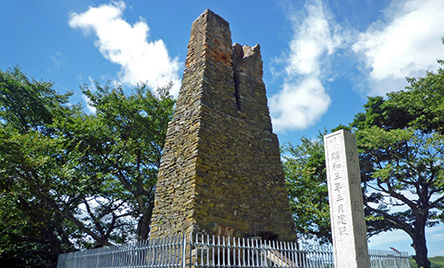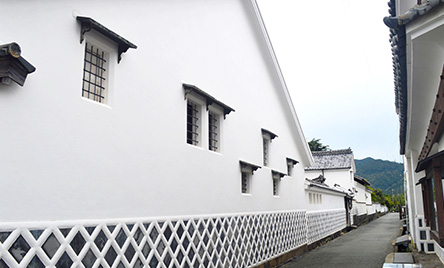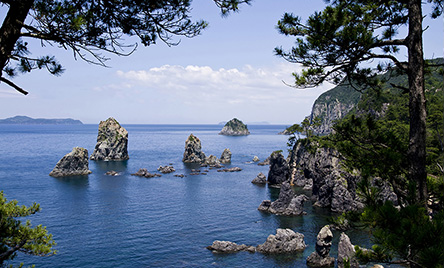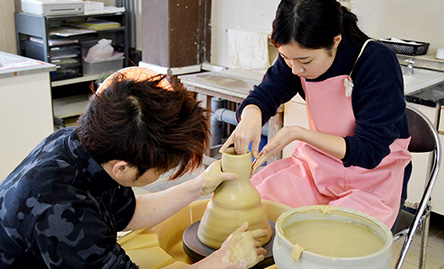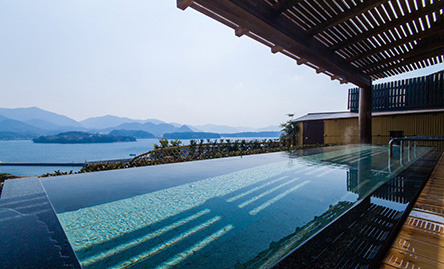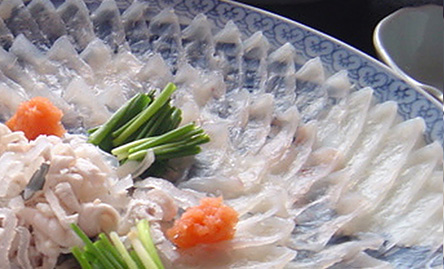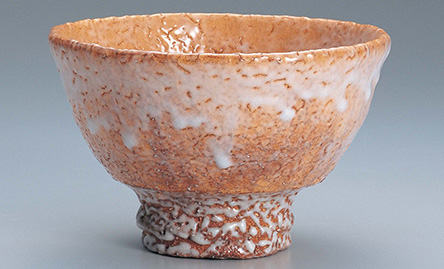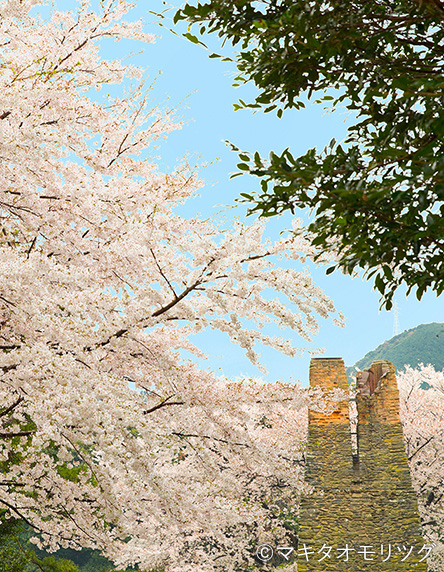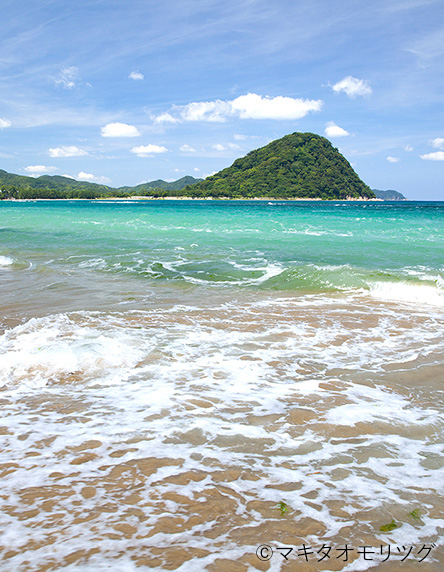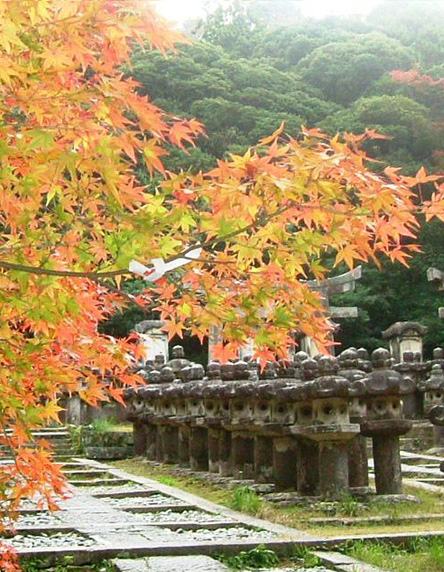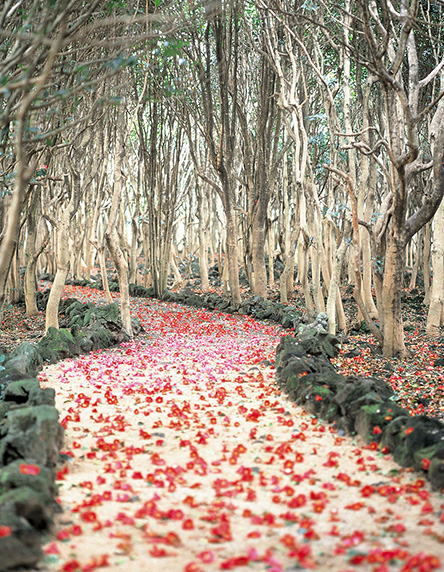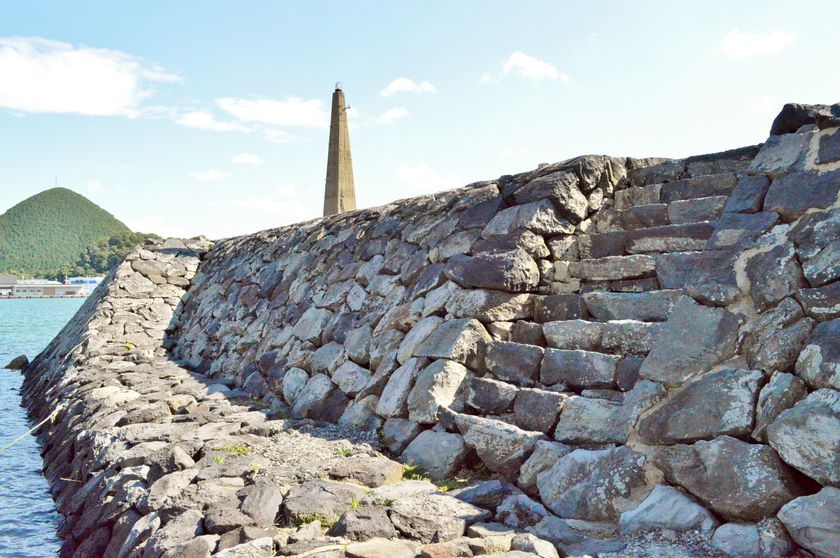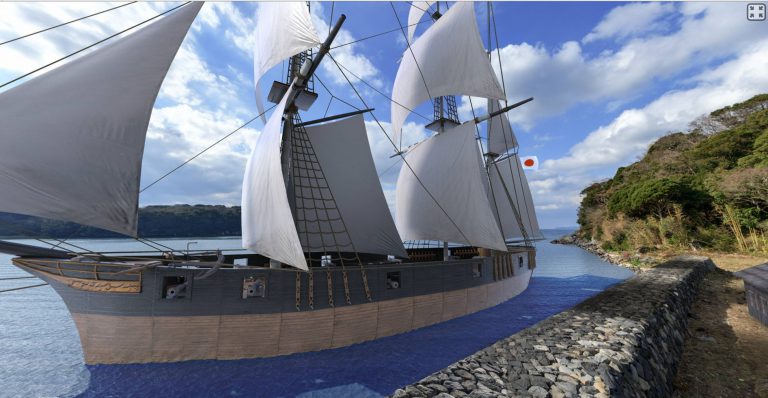The arrival of United States Commodore Matthew C. Perry (1794–1858) changed Japan. His fleet of four warships, which sailed into Uraga Bay, near Edo, in June 1853, posed a real military threat to Japan, which had closed off almost all contact with the Western world in 1639. Three months after Perry’s arrival, the shogunate lifted a ban on the construction of large warships, a prohibition that had been in force for more than two centuries.
On the western end of Honshū, the samurai and daimyo lord of Chōshū domain took note of Perry’s threat to open the country by force. In February 1856, they received permission from the Tokugawa shogunate to begin building a Western-style ship. A mere 10 months later, the 25-meter Heishin Maru launched from Ebisugahana and, in June of the following year, successfully made a trial run to the island of Mishima, located some 40 kilometers off the coast.
The Heishin Maru was based on the design of the Heda, a replacement schooner built for Russian Admiral Yevfimiy Putyatin (1803–1883), who had been sent to negotiate a treaty with Japan in 1854 and lost his fleet to a tsunami. Putyatin succeeded in establishing diplomatic relations between Japan and Russia in 1855 with the Treaty of Shimoda. The Heda was a 24-meter, two-masted schooner, and it was used as the base design for many of the early Western-style ships built in Japan.
By 1860, Chōshū domain had completed its second Western-style ship, the Kōshin Maru, which was used to train the fledgling Chōshū navy. Based on Dutch designs, the 43-meter, three-masted barque was equipped with eight cannons. It was designed by Fujii Katsunoshin (dates unknown), who had studied shipbuilding at Uraga and Nagasaki. In 1863, the Kōshin Maru was sunk by an American warship during the Battle of Shimonoseki Straits, but it was salvaged and used by Chōshū domain until about 1868, when it was sold. Chōshū built no other ships, opting instead to buy them from the Western traders who were gradually being allowed into the country.
The two ships built at the Ebisugahana shipyard are examples of Chōshū domain’s willingness to modernize, at first through considerable trial and error. The Heishin Maru was outfitted with nails, fittings, and anchors made with iron from the local Ohitayama Tatara Iron Works, and both ships were crewed by local men. The site of the shipyard has been under archaeological excavation since 2009. The dig has revealed traces of a rope-spinning shop, a blacksmith's foundry, a sawmill, a steam works, a design shop, and a drydock.
In 2015, Ebisugahana Shipyard was recognized as part of the UNESCO World Heritage: “Sites of Japan's Meiji Industrial Revolution: Iron and Steel, Shipbuilding and Coal Mining.”
(This English-language text was created by the Japan Tourism Agency. )
| (You can view it on your smartphone or tablet.) |
Basic info
| Price | No Charge |
|---|---|
| Access | 0.6km/0.37mile from the Hagi Reverberatory Furnace toward seaside |
| Address | 5159-14 Chintou, Hagi |
| Open | Open All Hours |
| Holiday | No Holidays |
